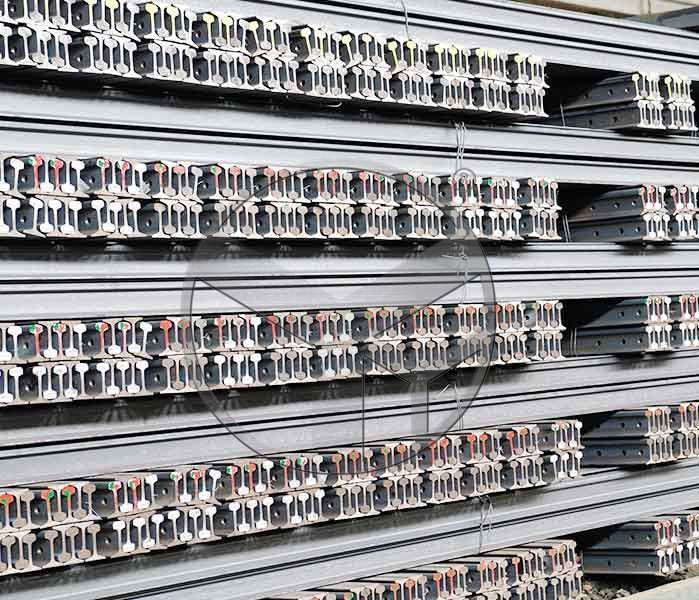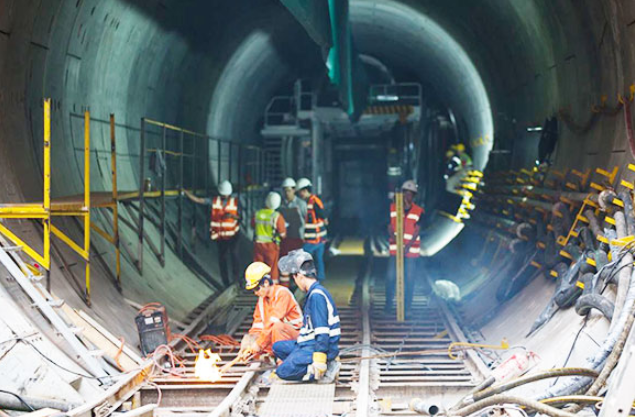Home >> News >> Latest News
The sleeper is the member on which the rails are arranged at the proper gauge. These sleepers are usually placed on ballast and are also called sleepers in some areas. When a train passes, the load on the rail is carried by these sleepers and distributed to the ballast. Steel Rail supplier YONGYANG shows you.
The basic functions of railway sleepers are to
To hold the rails firmly and maintain an even gauge
Transfer the load from the rail to the ballast or to the ground.
Reduce vibration from the rail.
Provide longitudinal and lateral stability.

These are sleepers made of wood. Wooden sleepers have been used since ancient times. These are still widely used in some western countries. Hardwood or softwood can be used to make wooden sleepers.
Benefits
Wooden sleepers are cheaper and easier to manufacture than other sleepers.
They are light in weight, so they can be easily transported and handled during installation.
They are good insulators, so the rails are well protected.
Any type of rail gauge can be maintained with wooden sleepers.
They are suitable for all types of rail sections.
Disadvantages
Compared to others, wooden sleepers have a much shorter life span.
Susceptible to moisture, leading to dry rot, wet rot, etc.
Pest attack may occur if not handled properly.
Poor creep resistance.
Needs attention even after laying.
Concrete rail sleepers are made of concrete with internal steel reinforcement. Concrete rail sleepers are used in many countries because of their high stability and low maintenance. These are more suitable for high speed rail. Most concrete sleepers are made of pre-stressed concrete in which internal tension is introduced into the sleeper before it is poured.
Benefits
Concrete rail sleepers are heavier than all other types of rail sleepers and therefore provide good stability for rails.
They have a long service life and are therefore economically preferable.
They have good fire resistance.
Concrete rail sleepers do not corrode.
No pest attacks, rot, etc. will occur.
The compressive strength is greater.
Concrete rail sleepers firmly hold the rail and maintain the gauge.
Disadvantages
Difficult to handle due to high weight.
For bridges and crossroads tracks, concrete rail sleepers are not suitable.
Damage may occur during transportation.
Steel sleepers are more commonly used because they are stronger than wood and more economical than concrete. They also have a good life span. They are molded into slots and placed in inverted slots on the ballast.
Benefits
They are light weight and easy to transport, place and install.
They are recyclable and therefore have good scrap value.
Steel pillows have a longer service life of about 30 years.
They have good fire resistance.
They have good creep resistance
They cannot be attacked by pests, etc.
Disadvantages
Steel is easily affected by chemicals.
Steel rail sleepers require high maintenance.
They are not suitable for all types of ballast provided as sleeper beds.
In case of derailment, they are very badly damaged and not suitable for re-use.
These are not suitable for all types of track sections and gauges.

Cast iron rail sleepers are widely used worldwide, especially in Indian railroads. They are of 2 types, pot sleepers and plate sleepers. Pot sleepers are not suitable for curves above 4 degrees.
Benefits
Cast iron sleepers can last up to 60 years.
They are also easy to manufacture and do not require longer transit times.
In the case of cast iron sleepers, pest attacks are not possible.
They provide a sturdy seat for the rails.
Damaged cast iron rail sleepers can be converted into new ones, so cast iron has good scrap value.
Cast iron rail sleepers prevent creep of the rails.
Disadvantages
Cast iron is inherently brittle and can be easily damaged when handled. Therefore, it is difficult to handle for transportation and placement.
Cast iron sleepers are easily damaged and corroded by salt water, so they are not suitable for coastal areas.
They can be severely damaged when derailment occurs.
Compared with some other rail sleeper materials, cast iron is expensive in the market.
A lot of fastening material is required to secure the rails to the sleepers.
Proper maintenance is required.
Please contact us today if you want buy the railroad stuff, we can send you our product list and the quote.

Leave a message